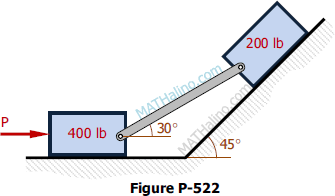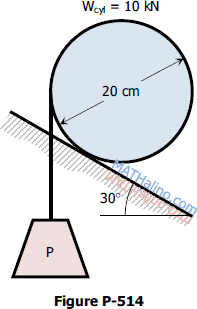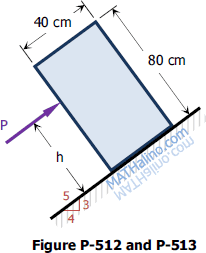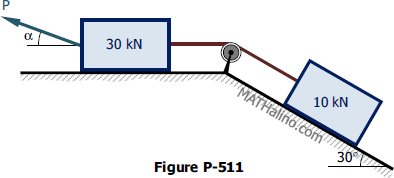Problem 522 | Friction
Problem 522
The blocks shown in Fig. P-522 are separated by a solid strut which is attached to the blocks with frictionless pins. If the coefficient of friction for all surfaces is 0.20, determine the value of horizontal force P to cause motion to impend to the right. Assume that the strut is a uniform rod weighing 300 lb.

- Read more about Problem 522 | Friction
- Log in to post comments






